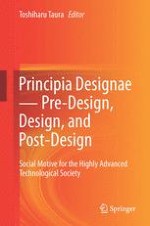2015 | OriginalPaper | Chapter
14. Computational Schema as a Facilitator for Crowdsourcing in a “Social‐Motive” Model of Design
Author : Rivka Oxman
Published in: Principia Designae - Pre-Design, Design, and Post-Design
Publisher: Springer Japan
Activate our intelligent search to find suitable subject content or patents.
Select sections of text to find matching patents with Artificial Intelligence. powered by
Select sections of text to find additional relevant content using AI-assisted search. powered by
